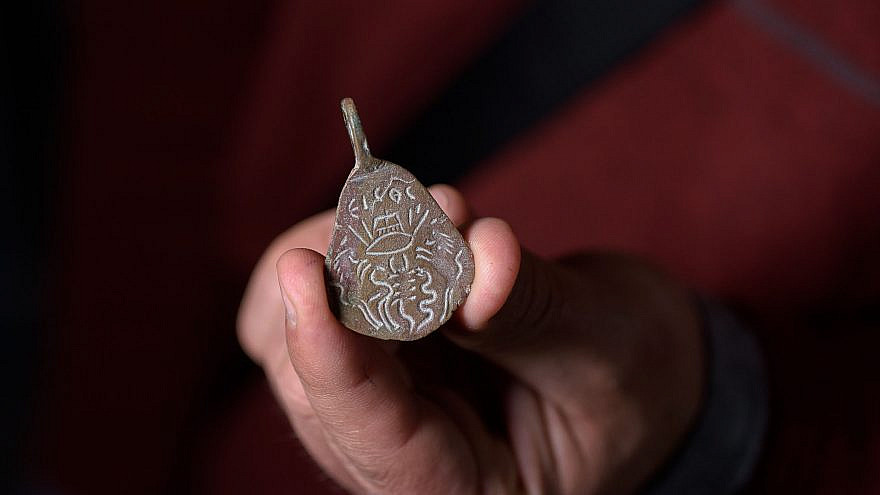An ancient pendant that was just handed over to Israel’s National Treasures Center by a family member of the woman who found it 40 years ago near the ruins of an ancient synagogue on Moshav Arbel in the Galilee may hold clues to Jewish customs during the Byzantine period.
According to the Israel Antiquities Authority, the 1,500-year-old bronze artifact, bearing Greek letters spelling out God’s name (“Yahweh”), appears to have been worn as an amulet to ward off the evil eye.
“The amulet is part of a group of fifth- and sixth-century C.E. amulets from the Levant that were probably produced in the Galilee and Lebanon,” said Antiquities Theft Prevention Unit deputy director Eitan Klein, who is conducting research on the pendant.
“This group of amulets is sometimes called ‘Solomon’s Seal’ and the rider is depicted overcoming the evil spirit—in this case, a female identified with the mythological figure Gello/Gyllou, who threatens women and children and is associated with the evil eye. The eye on the reverse is identifiable as the evil eye, being attacked and vanquished by various means. The amulet was therefore probably used to guard against the evil eye, possibly to protect women and children,” he added.
Thanking the amulet’s donor, Klein said, “I appeal to anyone who has previously found ancient artifacts to hand them over to the National Treasures Center, since objects of this kind tell the story of Israel’s history and heritage and they belong to all Israel’s citizens, both legally and in terms of their cultural value.”


























